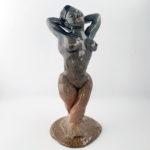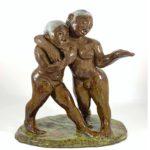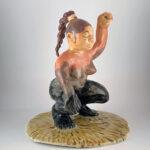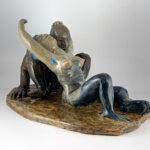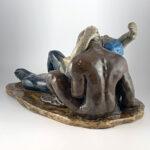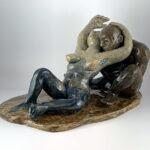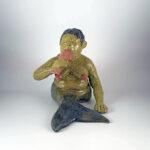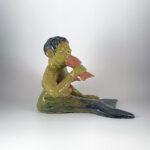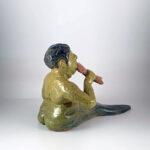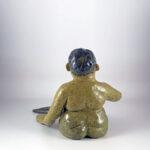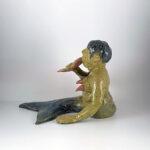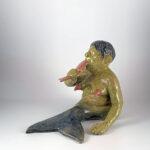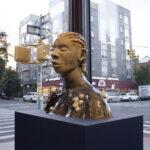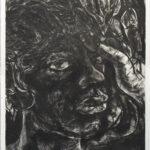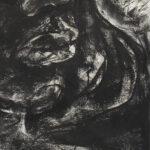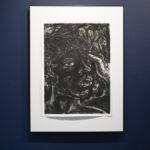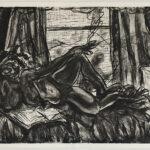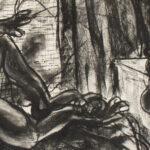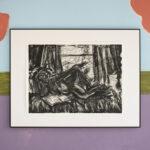I’m exhibiting six ceramic pieces and two drawings at Artshack Gallery from September 22nd until November 17th, 2022. From the exhibition text,
Titled after the James Baldwin short story about a Black woman’s struggle for love, happiness and agency, Come Out the Wilderness is inspired by the figures of Matisse’s Le Bonheur de Vivre. Harris renders her imaginary women, or “femmes,” in naturalistic, detailed clay figurines, as they pose and interact with one another in uninhibited sensuality. They become models for unbridled agency, and offer a narrative juxtaposition to the constrained realities of the Black women mirrored in Baldwin’s writing.
The figures are staged within an imaginary pleasure garden where they find freedom in intimacy and vulnerability, signified by their nudity and sometimes closed eyes. The colors in the show -moody blues, greens, purples and pinks- were inspired by moments the artist spent watching the sunset in New York pleasure gardens such as the Prospect Park peninsula and Hudson River Park piers.
The sculptures are accompanied by a mural that recreates Matisse’s Le Bonheur de Vivre sans the figures, which are instead represented by the ceramic works. Two charcoal self portraits depicting Black leisure are presented on the opposite wall and on the mural. These black and white drawings reflect the stark reality that contrasts the colorful fantasy depicted within the Matisse.
Baldwin famously migrated to France to escape the racial oppression he experienced in the US. Matisse, a French native, made paintings that project the fantasies of white imagination and suggest an enticing but illusory utopia. This disparity between white imagination and Black reality is represented by the charcoal drawings’ stark contrast against the colorful backdrop of the mural, suggesting Black interiority as refuge from white exteriority, and highlighting Black leisure as a liberatory practice.
The works evolved from studies of the Matisse painting, my interest in expressing the human pursuit of freedom and personal identity, and an analysis of the economic and material conditions in my life that arouse this desire. Baldwin captures these dynamics eloquently in his writing, and particularly in the short story after which I titled the exhibition about a young Black woman who finds herself struggling against the life she has created within the confinements of systemic misogynoir.
I was interested in the contrast between the archetypal freedom embedded in European painting, exalted in modernism and manufactured through the exploited sexual labor of Black and brown femmes, and what I imagine to be a living expression of such figures who strive to reclaim their bodies from colonial positioning and redefine themselves beyond the conceptual confines of hegemonic oppression.

